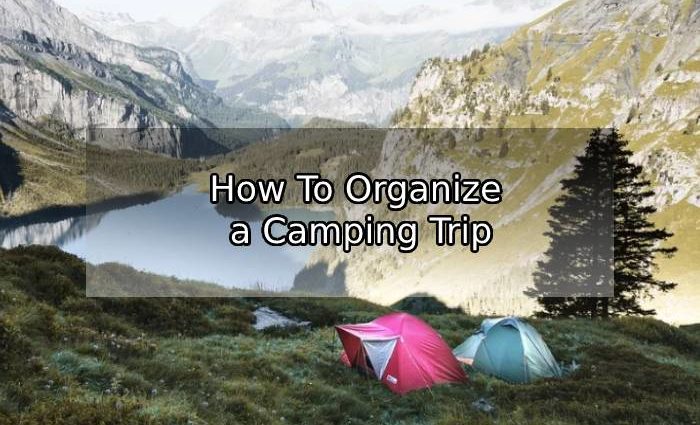Table of Contents
Why Go Camping?
Camping is arguably the most adaptable form of vacation. You can plan a camping trip to suit almost any circumstance, skill level, or interest, from leisurely tent camping at a campground to serious backcountry mountaineering at high elevation and with no facilities.
What all camping trips have in common is an unmatched proximity to nature. As the number of people living in urban areas increases, rustic solitude, outdoor adventure, and crackling campfires become ever more appealing. Camping can give you a chance to:
- Enjoy the solitude and quiet of the outdoors
- Explore wilderness areas and see scenery you wouldn’t come across otherwise
- Learn new skills, from campfire cooking and knots to stargazing and canoeing
- Get some fresh air and good exercise
- Save money compared to traditional hotel vacations
With all the camping options available to you, organizing a trip from scratch can be intimidating. To begin, consider who will go on the trip, what you’d like to experience, and how intense you want your activities to be. Three considerations will help focus your plans:
- Companions: Your camping team might consist of friends or family members. Find out everyone’s different strengths and delegate responsibilities accordingly. A good cook could be put in charge of meal preparation, whereas a mechanically minded camper could set up the tents. Also keep in mind that, though camping as a group is fun, safe, and practical, it’s important to keep the group from becoming a crowd. It can be difficult to maintain cohesiveness and clear communication—not to mention find a large enough campsite—when camping with more than five people or so.
- Setting: Though camping is often associated with forests and trails, wooded areas are far from the only places to camp. Many beaches have areas set aside for camping, and beach tents can be anchored in the sand. Other parks are set near lakes, on mountains, in caverns, and in deserts, giving you easy access to boating, mountain biking, skiing, rock climbing, and other sports.
- Difficulty level: How intense do you want your trip to be? Some campsites provide few or no facilities, while others have fire pits, bathrooms, and even electrical hookups. Some sites are right by a roadside, while others are miles from civilization and require strenuous hikes to reach. Know your abilities, and don’t plan a trip that’s too advanced. If you’re a complete beginner, consider a guided group trip, in which gear is provided and experienced guides lead the way.
Once you have an overall idea of how you want your trip to go, you can work through the practical issues of planning.
Find a Camping ground
The National Park Service operates nearly 400 sites in the United States and its territories. Camping areas are also run by the National Forest Service, the Army Corps of Engineers, and the Bureau of Land Management. (Private companies operate campgrounds as well, but most of these cater to RV campers.) Browse your options online at:
- Recreation.gov: A clearinghouse of sorts for all U.S. public land. You can search for public campgrounds by state and type of site. See www.recreation.gov.
- National Park Service: Comprehensive information, maps, and pictures of all NPS lands. A search engine helps you find sites with specific natural or historical features. See www.nps.gov.
Also, ask friends about their past camping trips; their advice can lead you to a site you might not have known about.
Make Reservations and Obtain Permits
Depending on where you camp, you generally need to either make a reservation or get a camping permit. You can do so through the park directly or through one of several independent camp-reservation services, such ReserveAmerica (www.reserveamerica.com).
When planning to visit a well-known campground (or any campground over a holiday), reserve early. Yosemite National Park’s campgrounds, for example, fill up six months in advance for the busy May-to-September high season.
Map Your Route

If you’ll be camping in a national or state park, you can almost always call and request that maps and brochures be sent to you. Park-published maps usually show campsites, restrooms, activity areas, and points of interest. Though fine for a basic trip, they are not very geographically detailed.
If you plan to explore a park extensively or off the beaten track, get topographical maps, which give a more complete picture of the terrain. You can find them at local camping and hiking supply stores or order them directly from the U.S. Geological Survey at www.usgs.gov.
Make Contingency Plans
Always have a backup plan you can follow in case something goes wrong on your trip. In particular:
- Figure out in advance the fastest way back to civilization from every site you plan to visit.
- Map out alternate trail routes should you need to shorten a hike.
- Leave detailed schedules and routes with a contact person at home. Arrange to call and check in with that person when you return. (You might also check in during your trip if your cell phone gets reception.)
Do Some Pre-Trip Testing and Conditioning
Prepare for your trip by taking the following steps:
- Assess your physical fitness level: If you’re feeling a little out of shape, consider starting an exercise regimen prior to your trip. Cycling and climbing are especially beneficial because they build stamina in the lower body. Even simple steps such as taking the stairs rather than the elevator on a regular basis can help.
- Test out your equipment: Walk around with your backpack on. Does it fit well? Is it comfortable? Is it too heavy? If you notice a problem now, it’ll only be magnified when you’re on your trip. If you buy new hiking boots or walking shoes, wear them around to break them in. (For more on equipment, see Camping Gear and Camping Clothing and Footwear.)
- Test out the food you plan to eat: Try preparing some of your camping-trip meals at home first. This will ensure that you have all the ingredients and equipment you need and that you like the taste of the food.
- Try out your tent: Practice pitching your tent and packing it back up so you’re not caught unprepared.


Comments are closed, but trackbacks and pingbacks are open.